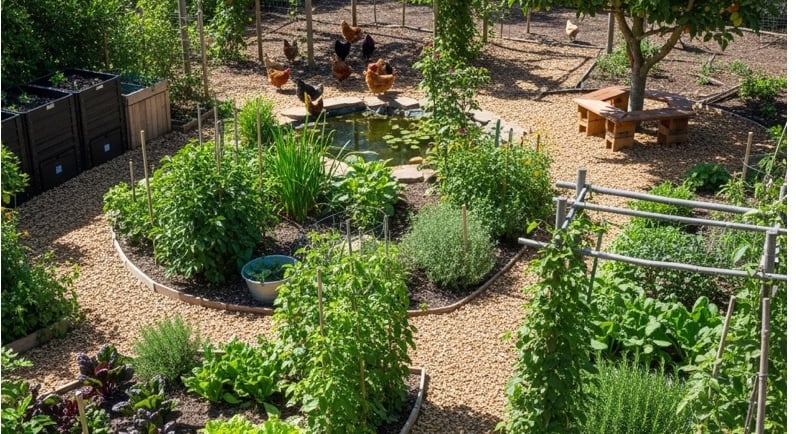🌿 GROWPlantWell – Nurture Nature, Transform Your Space 🌿
🌍 Permaculture & Regenerative Gardening Basics: Grow in Harmony with Nature
Explore the basics of permaculture and regenerative gardening 🌱. Discover sustainable methods, soil health practices, and eco-friendly designs to create a thriving garden in harmony with nature.
Grow Plant Well
8/17/20252 min read


🌿 What is Permaculture?
Permaculture is a design system for sustainable living and gardening. It focuses on:
🌳 Mimicking natural ecosystems (like forests and meadows)
💧 Conserving resources like water and energy
🍎 Producing food while protecting biodiversity
👉 Think of permaculture as creating a garden that looks after itself, where plants, soil, water, and even animals all play a role in balance.
🌾 What is Regenerative Gardening?
While permaculture is a design philosophy, regenerative gardening is about healing and restoring the soil. It goes beyond “sustainability”—instead of just maintaining, it improves soil health and ecosystem function each year.
Key regenerative practices include:
🌱 Composting & organic mulching – feeding soil life
🐞 Avoiding chemicals – letting natural predators manage pests
🌻 Crop rotation & cover crops – boosting biodiversity
🐝 Encouraging pollinators – bees, butterflies, and beneficial insects
🌞 Core Principles of Permaculture & Regenerative Gardening
🌍 Care for the Earth – protect soil, water, and biodiversity
👩🌾 Care for People – grow healthy food for communities
🤝 Fair Share – share surplus and reduce waste
🍃 Work with Nature, Not Against It
🌱 Build Soil First – everything starts with healthy soil
🌱 Benefits of Permaculture & Regenerative Gardening
🌳 Restores soil fertility naturally
💧 Saves water with smart design (swales, mulching, rainwater harvesting)
🐞 Reduces pests without chemicals
🍇 Yields healthy, nutrient-rich food
🌎 Fights climate change by capturing carbon in soil
🌿 Simple Steps to Start in Your Garden
👀 Observe before planting – study sun, water flow, wind, and soil
🌻🌽 Start small with companion planting – grow plants that help each other
🍂 Add compost & mulch – feed soil microorganisms
💧 Harvest rainwater – use barrels or swales
🦋 Encourage wildlife – plant flowers for pollinators
🔄 Rotate crops – keep soil balanced and disease-free
🔗 Practical Guide by Oregon State University
❓ Frequently Asked Questions (AEO – Answer Engine Optimization)
Q1: What’s the difference between permaculture and regenerative gardening?
➡️ Permaculture is a design philosophy 🌿, while regenerative gardening 🌱 focuses on improving soil health and restoring ecosystems.
Q2: Can I practice permaculture in a small backyard or balcony?
➡️ Yes! 🌱 Even container gardening with companion plants and composting food scraps is a start.
Q3: How long before I see results in soil health?
➡️ With composting and mulching, you’ll notice improvements in soil texture and plant growth within a few months.
Q4: Do I need special tools or expensive systems?
➡️ Not at all. Most regenerative methods use natural resources like compost, mulch, and smart planting.
🌍 Conclusion
Permaculture and regenerative gardening are more than gardening techniques—they’re a lifestyle shift toward harmony with nature 🍃. Whether you have a small balcony garden or a large farm, these practices can help you grow healthier food 🍇, heal the soil 🌱, and contribute to a greener planet 🌎.